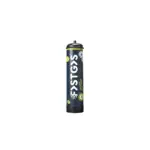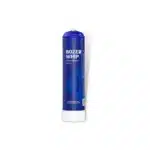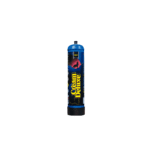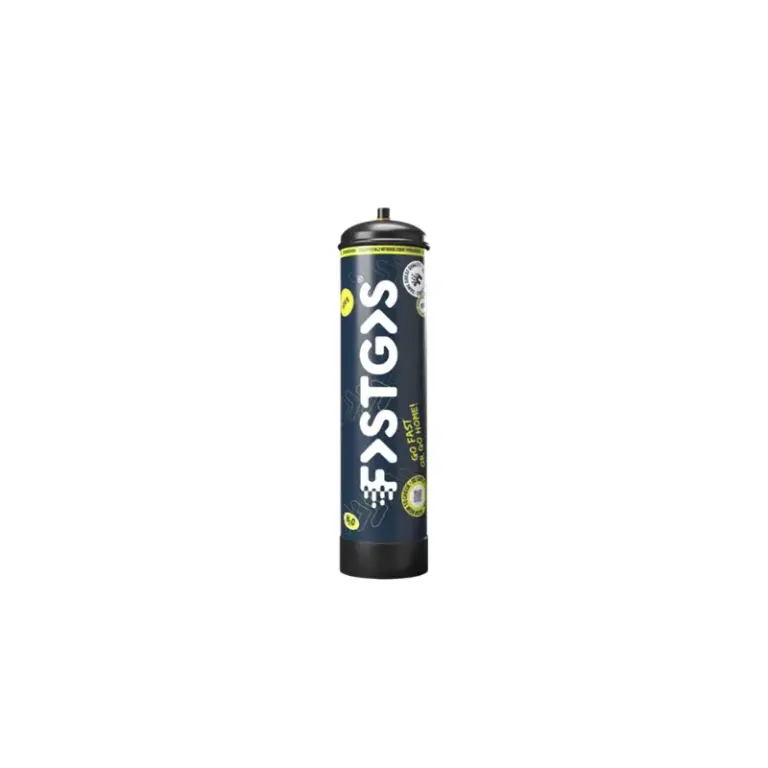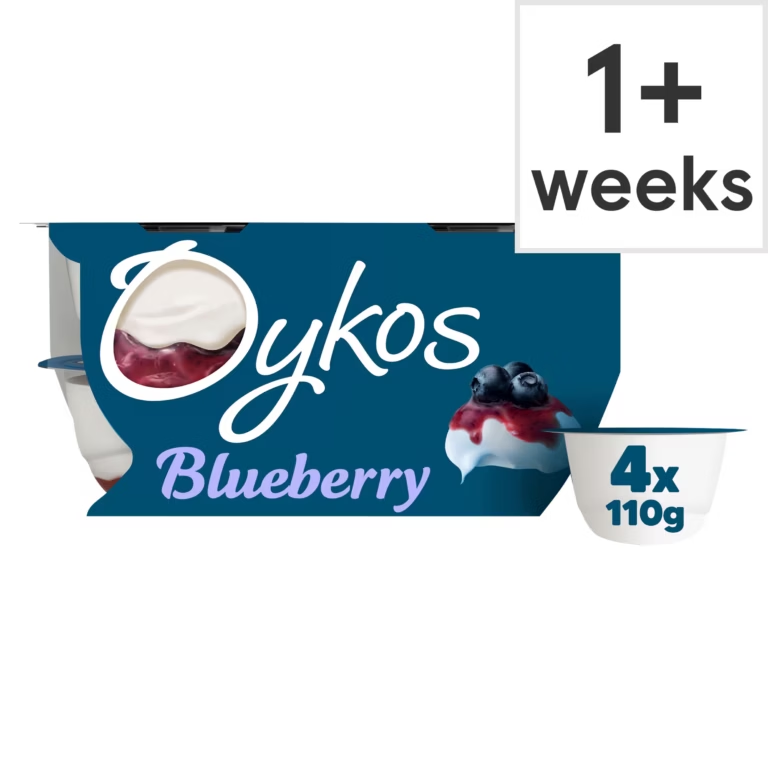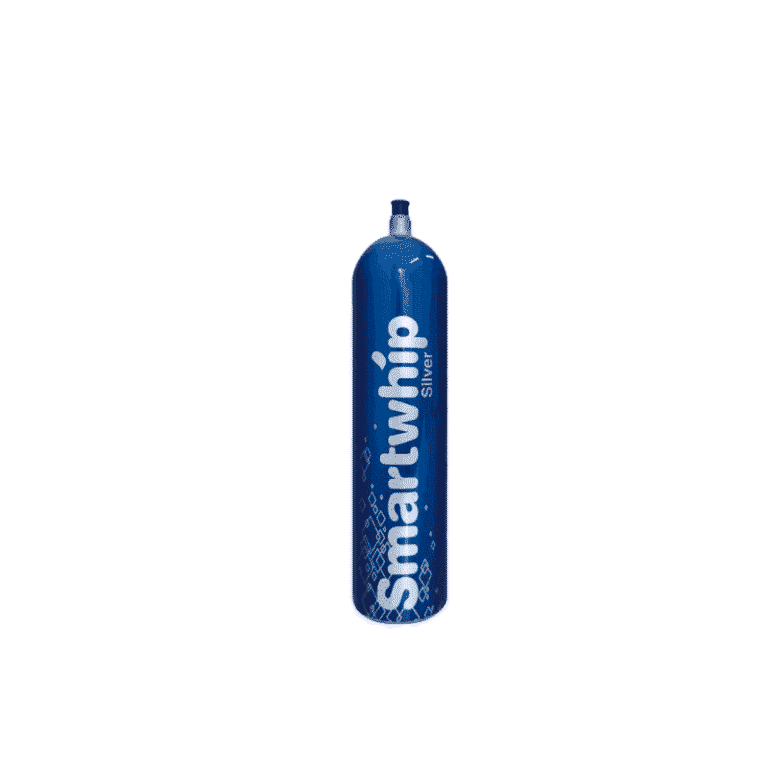Quick Answer: Can You Recycle Whipped Cream Chargers?
Yes, whipped cream chargers (nitrous oxide canisters) are made from recyclable steel. However, they must be completely empty before recycling and should be disposed of through appropriate metal recycling programs. Check local guidelines for safe handling.
Every year, countless cream chargers are used and discarded, prompting eco-minded folks to wonder about their recyclability. These small metal cartridges filled with nitrous oxide are a kitchen staple for whipping cream and crafting culinary froths. Nonetheless, beyond their culinary appeal, there’s an essential conversation concerning their environmental impact and just how we can better recycle and dispose of them.
Made primarily from steel– a material that can be recycled–cream chargers still complicate recycling efforts due to their environmental footprint. From production to usage, these chargers contribute to greenhouse gas emissions and risk metal contamination. These issues highlight the need for a deeper understanding of their materials, everyday uses, and broader environmental impact.
In this discussion, we’ll explore the recyclability of cream chargers, tackling the challenges and solutions of the recycling process We’ll also mention the essential steps for theirproper disposal And also, we’ll visit local recycling programs and innovative alternatives to traditional disposal methods, stressingthe importance of responsible practices to conserve resources and reduce environmental risks Allow’s journey together toward a lot more sustainable usage and disposal of cream chargers, raising awareness and encouraging eco-friendly moves throughout the culinary scene.
What Are Cream Chargers?
Cream chargers are small, gas-filled cylinders typically used in the culinary world to create whipped cream These chargers areintegral to the operation of whipped cream dispensers Each charger contains a measured amount of nitrous oxide, a colorless gas used to aerate cream, producing a light, fluffy texture that’sperfect for toppings Cream chargers are commonplace in both professional kitchens and home settings due to theirconvenient size and easy usage While they are primarily known for their use in whipping cream, they are also utilized for infusing flavors and carbonating beverages.
Composition and Materials
Cream chargers are predominantly made of recyclable materials like stainless steel, which enhances their durability and ensures a high standard of safety throughoutuse The choice of stainless steel ensures that these chargers can hold up against the pressure of the nitrous oxide gas theycontain Inside, each charger isfilled with food-grade nitrous oxide This form of nitrous oxide is especially prepared for culinary uses, ensuring that there are noharmful additives Despite their robust construction, it’s important to handle cream chargers carefully to avoid potential safety hazards associated with pressure release if they are tampered with improperly.
Common Uses in Culinary Arts
In the culinary arts, cream chargers are most frequently associated with making whipped cream, astaple in desserts and beverages By charging a special dispenser with nitrous oxide, chefs and home cooks can transform liquid cream right into a voluminous, airy topping Beyond their main function, cream chargers are also employed in a lot more innovative culinary techniques such asflavor infusions By utilizing cream chargers with a cream dispenser, chefs can infuse liquids likeoils or alcohols with herbs and spices They also play a role in developing foams and mousses, adding texture and flavor to dishes These versatile tools expand the creative possibilities in the kitchen, offering both practicality and a touch of culinary flair.
Environmental Impact of Cream Chargers
Cream chargers, frequently used in cream dispensers to create whipped cream, lug significant environmental effects. Primarily made from stainless steel, these small cylinders arefilled with food-grade nitrous oxide gas While exceptionally helpful for culinary purposes, their disposal presentsenvironmental challenges The production, use, and disposal of these chargers all contribute to the broader problem of climate change and sourcemanagement Understanding their environmental impact calls for checking out numerous locations, consisting ofgreenhouse gas emissions and the potential for metal contamination Responsible disposal methods and recycling practices play essential functions in reducing these effects, hence advertising better environmental responsibility.
Greenhouse Gas Emissions
The use of nitrous oxide gas in whipped cream chargers substantially addsto greenhouse gas emissions Nitrous oxide is a powerful greenhouse gas, roughly 300 times a lot more efficient at capturing heat in the ambience thancarbon dioxide Launched throughout the use and inappropriate disposal of these chargers, it worsensglobal warming and climate change Although appliances like cream dispensers bring convenience, awareness and energetic management of emissions from nitrous oxide can assistance reduce theirenvironmental footprint Taking on efficient recycling programs and guidelines that make sure the proper handling of diminished chargers is essential in reducing these emissions and their associated environmental impact.
Metal Contamination Problems
The stainless steel construction of cream chargers provides a risk of metal contamination when improperly disposed of. If not recycled, these chargers can end up in garbage dumps, where the metal deteriorates and possibly infects dirt and water resources. This contamination can pose major safety hazards and environmental risks, influencing both human health and communities. A Lot Of recycling centers approve cream chargers as scrap metal, permitting their material to return to the manufacturing cycle and decreasing the need for new metal extraction. By complying with proper recycling guidelines, we can visual potential metal waste and its harmful environmental effects while taking advantage of the benefits of steel recycling throughout the world. Understanding these worries stresses the importance of responsible disposal and the application of efficient recycling options to address these pressing environmental issues.
Recyclability of Cream Chargers
Cream chargers, also known as whipped cream chargers, are small, metal canisters havingfood-grade nitrous oxide gas They areused with whipped cream dispensers to create fluffy whipped cream Understanding whether these cream chargers are recyclable is vital due to theirenvironmental impact and the need to reduce metal waste These chargers are typically made from stainless steel, which is arecyclable material Nonetheless, their recycling is not as simple as transferring them right into arecycling bin There specify factors to consider and guidelines to adhere to to make sure cream chargers do not end up adding to greenhouse gas emissions or various other safety hazards.
Why Steel Is Recyclable
Steel is one of the most recycled materials in the world, and for several excellent reasons. It is durable, keeps its homes with various recycling procedures, and substantially decreases environmental impact contrasted to producing newsteel Recycling steel assists in preserving natural resources and decreasingglobal warming potential by cutting down on greenhouse gas emissions associated with steel production The recyclability of steel, consisting of those from cream chargers, exists in its capacity to be thawed down and improved without shedding architectural stability. This makes steel recycling a keystone of environmental responsibility, aiding in reducing climate change and general metal waste.
Challenges in Recycling Cream Chargers
Despite being made from recyclable materials like stainless steel, cream chargers existing details challenges when it comesto recycling One main concern is the existence of recurring nitrous oxide gas, which presents safety risks if not completely clearedbefore disposal Recycling centers commonly have rigorous recycling guidelines due to thesesafety hazards An additional obstacle is the absence of awareness and well established recycling programs especially for cream chargers, making it tough for consumers to recognizeproper disposal methods Several recycling facilities do not approve them due to potential hazards and special handling needs. Consequently, enhancing access to information and encouraging more secure disposal methods and recycling options can substantially boost the recycling prices of cream chargers.
Steps for Proper Disposal
Getting rid of cream chargers attentively plays an essential role in decreasing environmental impact and promoting sustainability. Several people use whipped cream chargers routinely for culinary purposes, so understanding just how to dispose of these cartridges is essential. As cream chargers correctly contain food-grade nitrous oxide. This gas adds to greenhouse gas emissions if launched untreated, proper disposal is key to decreasingenvironmental risks Though lots of parts of the cream charger can be recycled, details steps have to be complied with to make sure safe and efficientdisposal Constantly adhere to local recycling guidelines and capitalize of metal recycling programs at assigned centers or facilities.
Ensuring Chargers Are Empty
Before getting rid of of cream chargers, it’s important to make certain they arecompletely empty This step is essential due to the fact that any staying nitrous oxide gas can position safety hazards if improperly launched or if the chargers are squashed throughoutthe recycling process To make sure full vacuum, affix the charger to a whipped cream dispenser and release any staying gas by pressingthe handle This will certainly lessen the risk of leak and make sure that you handle just basically inert metal.
Chargers that are not empty can come to be a safety risk due to the pressurized gas they contain. Any recurring pressure might lead to mishaps or breakdowns throughout both transport and processing in recycling centers. Taking this easy safety measure can substantially decrease the challenges associated with recycling these items while sticking to environmental responsibility standards. Make it a routine to check each charger, launching gas safely, before considering it for recycling programs or disposal.
Safe Handling and Transport
When cream chargers are confirmed empty, the next step is to handle and transport them safely to an assignedrecycling center or metal recycling facility Utilizing suitable containers or bags that can safely contain the chargers is advised to avoid any mishaps or leaks throughouttransit This element of disposal is vital as inappropriate handling can lead to unneeded safety risks, especially due to their steel composition, which is best managed carefully.
When carrying empty chargers, think about taking them to recycling facilities outfittedto handle metal waste A Lot Of cream chargers are made from stainless steel, a recyclable material known for itsdurability and resistance to corrosion Recycling guidelines typically suggest not putting them in regular recycling bins implied for paper or plastics, yet instead carrying them especially to centers matchedfor scrap metal Involving in responsible disposal of cream chargers shows a dedication to combating climate change by decreasingenvironmental impact and greenhouse gas emissions Proper disposal of these metal items adds to a cleaner environment and advertises responsible recycling routines.
Local Recycling Programs
The enhancing acknowledgment of environmental responsibility has actually triggered lots of areas to create local recycling programs focused on decreasing waste and advertisingsustainable practices These programs are vital for dealing with different materials, consisting of thoseused in cream chargers Considered that these small metal canisters commonly contain food-grade nitrous oxide, it is important to figure out if and how they can berecycled Although the recyclability of cream chargers depends on local centers and their details guidelines, lots of locations have actually developed campaigns to handle suchmetal waste To get involved in these efforts properly, locals ought to explore the details recycling options and disposal methods readily available in their areas.
Examining Local Guidelines
Before getting rid of cream chargers, it’s essential to check local guidelines to recognize the recycling options readily available. Some towns give details instructions for recycling items like whipped cream chargers, which are commonly classified as recyclable materials. Assessing these guidelines can disclose whether cream chargers ought to be put in standard recycling bins or taken straight to recycling facilities. These guidelines also highlight any safety hazards that might occur throughout disposal due to the nitrous oxide gas staying in the chargers. By sticking to these recommendations, locals can make sure that their actions line up with local recycling programs and contribute to decreasing the environmental impact of metal waste.
Manufacturer Take-back Programs
In enhancement to local recycling programs, manufacturer take-back programs offer an additional opportunity for responsibly getting rid ofof cream chargers These campaigns enable consumers to return used chargers straight to the manufacturers, where they can be refined with developedrecycling guidelines Manufacturer take-back programs give an organized method of gathering invested items, decreasing the chance of safety risks or harmfulwaste issues Getting Involved in such programs not just sustains environmental objectives yet also motivates manufacturers to take energetic functions in managing the lifecycle of theirproducts By examining with manufacturers for readily available take-back options, consumers can additional reduction the greenhouse gas emissions associated with inappropriate disposal and contribute favorably to climate change reduction efforts.
Alternatives to Traditional Disposal
When dealing with cream chargers, traditional disposal methods can commonly leadto safety hazards and environmental impact These tiny stainless steel cylinders, used to create whipped cream using nitrous oxide gas, stand for both a difficulty and a chance for environmentallyresponsible disposal Many Thanks to their steel construction, cream chargers are suitable for recycling, although they position some special barriers. Their disposal needs focus on recycling guidelines to make sure that they are not incorrect for harmful waste. Thankfully, there are various alternatives to traditional disposal methods that reduce safety risks and contribute favorably to the environment. From proper recycling to creative repurposing, uncovering these alternatives is essential for decreasing our carbon footprint and lessening the adverse effects of global warming.
Upcycling Concepts
Upcycling gives an innovative and creative alternative to simply throwing outcream chargers Rather of delegating these items to the recycling bin, they can be changed right into helpful or creativeitems for the home The solid steel construction of whipped cream chargers deals durability and versatility, making them prime prospectsfor crafting Select jobs that match your ability level, whether you’re a newbie or a seasonedDIY enthusiast In addition, integrating these upcycled creations right into daily life fosters environmental responsibility by expanding the product’s life-span, hence straight decreasing metal waste.
Think about changing cream chargers right into small planters for succulents or herbs, offering both aesthetic allure and functionality. You might also repurpose them right into special candle holders, adding a rustic touch to your home style. If you’re really feeling especially laborious, you could also form them right into elaborate models or decorative items. In accepting the obstacle of upcycling, you’re not just decreasing waste, but also delighting in the personal satisfaction that comes with developing something new and valuable.
Waste Reduction Techniques
Efficiently decreasing waste relevant to cream chargers entails a mix of conscious buying, proper disposal, and innovative recycling practices Constantly begin by re-evaluating the requirement and regularity of whipped cream usage, consequently decreasing the number of cream chargers bought and ultimately disposedof Less purchases correspond to much less waste, an easy yet efficient approach for those aware of metal recycling procedures and their environmental impact.
Next, focus on responsible recycling by acquainting on your own with your local recycling programs and centers. Validate that they approve cream chargers as a component of their steel recycling efforts. When in uncertainty, checking out a recycling center straight or a special metal recycling facility can ensure the chargers are managed properly, hence avoiding greenhouse gas emissions associated with inappropriate disposal.
In addition, supporter better recycling practices within your community, encouraging others to do the same. By advertising awareness of recycling options and disposal methods, the cumulative effort can lead to a considerable reduction in landfill payments, adding favorably to the battle against climate change. With these waste reduction approaches, you can lead efforts toward a greener earth while establishing an example of environmental responsibility.
Importance of Responsible Recycling
In today’s environmentally aware world, responsible recycling plays an essential role in reducing the adverse impact of waste on our earth. One location that requires focus is the disposal of whipped cream chargers, frequently known as cream chargers. These small canisters, made primarily of stainless steel, contain food-grade nitrous oxide used for whipping cream. While they might appear trivial separately, their cumulative disposal can contribute to metal waste if not managed appropriately. By putting these items in the suitable recycling bin or providing them to recycling centers, we make sure that they are refined in a manner in which preserves resources and decreasesenvironmental impact It’s important to adhere to recycling guidelines to make the process efficient, as inappropriate disposal might position safety hazards and contribute to greenhouse gas emissions, worsening issues like global warming and climate change.
Preservation of Resources
Recycling cream chargers is a critical action in the preservation of resources, playing a considerablerole in sustainable practices By recycling the stainless steel used in these chargers, we contribute to a cycle that decreases the need for newmetal production This not just preserves raw materials yet also conserves energy and decreases the environmental footprint associated with miningand metal manufacturing Proper recycling of whipped cream chargers sustains the metal recycling industry, which refines scrap metal right into helpfulmaterials With responsible recycling, we can utilize existing resources a lot more effectively, decreasing the strain on the earth’s limitedresources Involving in these practices highlights a dedication to environmental responsibility, ensuring that resources are managed for future generations while dealing with current needs.
Lowering Environmental Risks
Lowering environmental risks associated with waste disposal is essential for keeping a healthy community. Whipped cream chargers, due to their nitrous oxide content, need mindful handling to avoid coming to be harmfulwaste Inappropriate disposal can lead to safety risks, such as gas leaks, whichcontribute to greenhouse gas emissions By complying with suitable recycling guidelines, individuals can reduce these risks and support a cleanerenvironment Recycling facilities and programs especially made for such materials assistance in safely managing the disposal process, ensuring that harmful emissions are reduced. This, in turn, reduces the environmental impact of waste on climate change. It’s vital to take on safe disposal methods to safeguard both our environment and the health of our areas, advertising a sustainable future with environmentally friendly practices.
Raising Awareness
Cream chargers, commonly used in kitchens to whip up delightful desserts, are more than simply convenient culinary tools; they have substantial environmental effects. These small metal cartridges, filled with food-grade nitrous oxide, have become common in the food industry as important representatives for developing whipped cream and various other frothy thrills. Nonetheless, their prevalent use also elevates worries concerning waste management and recycling practices. Understanding whether cream chargers are recyclable is essential, not just for decreasing environmental impact, but also for promoting sustainability in the culinary world.
Enlightening Consumers and Industry Professionals
Boosting awareness amongst both consumers and industry professionals concerning the recyclability of cream chargers is vital. Several are uninformed that cream chargers, predominantly made of stainless steel, are recyclable materials, yet they frequently end up in landfills due to inappropriate disposal methods. Enlightening customers can substantially reduce the metal waste ending up in discards. This entails training proper recycling guidelines and ensuring the requirement of transferring these chargers in metal recycling bins rather than a basic trash bin. In addition, highlighting the safety risks, such as greenhouse gas emissions stemming from inaccurate disposal, can trigger even more responsible action from customers. Notifying kitchen staff and supervisors concerning local recycling centers and programs better instills recycling right into daily regimens, ensuring a broader impact.
Advertising Eco-friendly Practices in the Culinary Industry
Eco-friendly practices within the culinary industry expand beyond recycling to include a detailed approachof environmental responsibility Encouraging culinary professionals to take on sustainable practices by correctly managing invested cream chargers can substantially reduce theirenvironmental impact By taking part in steel recycling programs, businesses can contribute to decreasingharmful greenhouse gas emissions associated with nitrous oxide gas In addition, involving in efficient disposal methods ensures that cream chargers are not categorized as harmfulwaste Culinary facilities ought to execute recycling programs and give staff with clearrecycling options and guidelines Sustaining such campaigns not just shows a dedication to the earth yet can also raise a business’s reputation in a climate- consciousmarket As awareness and application of these practices grow, the culinary industry can play a critical role in battling climate change and advertising a healthier environment.
Read Intresting Blogs Here.




